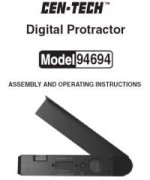JCG
100 W
- Joined
- Nov 10, 2008
- Messages
- 174
Wow, what a day. I got to (for the first time) do what many folks here already take for granted, ride an electric bike out on the road. I've shown the results of a few tests using the various components already, so the next challenge was to make the bike mobile, to unplug it. I needed first to come up with a way to support the large ultracap module behind the rear seat, and fix all of the required devices and controls into place. I scrounged around, and with the help of some friends in the Physics building I found some aluminum sheet and brackets that had been used to hold window air conditioners into place. After cutting, drilling, and bolting things into place, this is what it all looked like:

Some details from the side and rear of the support rack:




You'll quickly note that there is a black controller box that is duct taped to the top of the capacitor housing. That's the controller that came with the NineContinent Kit, which is "pedal first" and has a 20 A current limit. I'm using it until the cable I need for my Kelly controller shows up, so for now only 20 A is allowed, and no regen is possible.
I wanted to do a street test to see what kind of acceleration, top speed, and power/current draw there would be, so I set up the charging station to get the module to 48 V and monitored it with the Cycle Analyst.

Soon I was ready to take a cruise on College Street.
[youtube]KW8PF5RiRnI[/youtube]
With the throttle maxed out, it pulled the expected 20 A, and power draws ranged from 700-750 W. I think it's a 500 W rated motor. I also went up a very steep hill (probably about 10% grade) at a good speed while pedaling just a little bit along with the motor. In all, a lot of fun!
The next step will be simple (unloaded) regen tests in the lab, using the Kelly controller with a proportionally controlled twist brake on the left handlebar.

Some details from the side and rear of the support rack:




You'll quickly note that there is a black controller box that is duct taped to the top of the capacitor housing. That's the controller that came with the NineContinent Kit, which is "pedal first" and has a 20 A current limit. I'm using it until the cable I need for my Kelly controller shows up, so for now only 20 A is allowed, and no regen is possible.
I wanted to do a street test to see what kind of acceleration, top speed, and power/current draw there would be, so I set up the charging station to get the module to 48 V and monitored it with the Cycle Analyst.

Soon I was ready to take a cruise on College Street.
[youtube]KW8PF5RiRnI[/youtube]
With the throttle maxed out, it pulled the expected 20 A, and power draws ranged from 700-750 W. I think it's a 500 W rated motor. I also went up a very steep hill (probably about 10% grade) at a good speed while pedaling just a little bit along with the motor. In all, a lot of fun!
The next step will be simple (unloaded) regen tests in the lab, using the Kelly controller with a proportionally controlled twist brake on the left handlebar.

















